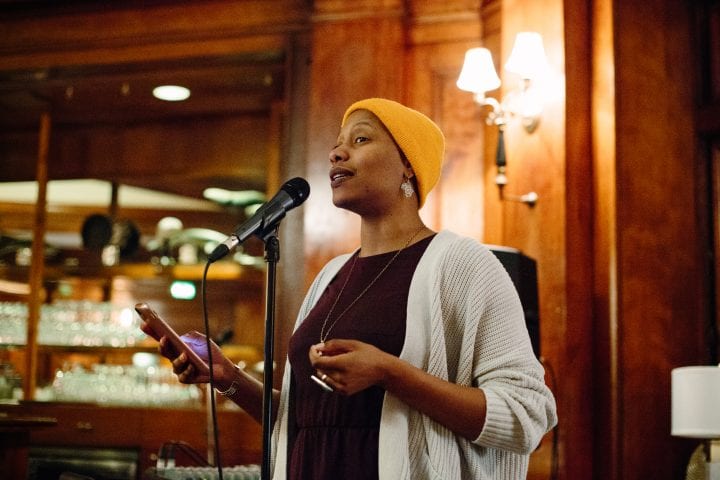
WITS Voices: Hybrid Poems and the Middle Schoolers Who Execute with Ease
February 5, 2018
By Imani Sims, WITS Writer-in-Residence
It’s always an experiment when trying to engage young minds with new content. The haibun form allows for concrete examples while also allowing the freedom to imagine. This fall, I spoke to a group of young folks who embraced this idea with vigor.
The Form: Haibun
Definition: A “literary form originating in Japan, combining prose and haiku. The range of haibun is broad and frequently includes autobiography, diary, essay, prose poem, short story, and travel journal” (Wikipedia).
Example: Abiding, by Harriot West
He’s taking a long time to die. Death is no big deal to the nurse but this is my father she’s speaking of and there it is, round and round in my head, the refrain from a book I loved as a child: Wait. Wait until the moon is full.
winter wind
a rattle of dry leaves
on the oak
This form allows the author to create prose that is complemented by a haiku or short poem.
When I teach this to middle schoolers, I offer a few rules:
1. Make each word count in the prose text, as in a prose poem:
-Be specific
-Be precise
-Use imagery
2. Limit the prose text, such as to 20-180 words
3. Use only one haiku.
-Place your haiku after the prose
-The haiku serves as a climax or epiphany to what came before
The Rules afford students a framework in which to imagine. Out of these rules come stories that not only illuminate the human condition, but that also give students the opportunity to practice being specific and precise.
This form is wonderful for imagery work, paired with the idea of making every word count. While limitations can be frustrating at time, they also enable the mind to synthesize information and depict that information in a way that elicits potent word-pictures for the reader.
Tips for making this work:
1. Work backwards: ask students to write the story first and then reduce that story into the 20-180 word limit.
2. If haikus are their strong suit, offer the opportunity for the “conclusion or epiphany” to guide the story/prose.
Good luck, educators!

Imani Sims spun her first performance poem at the age of fourteen. She has gone on to teach performance poetry to youth and adults, publish her first collection of poetry entitled, Twisted Oak, on Requiem Press, and founded an interdisciplinary arts production company, Split Six Productions. Her latest book of poetry, (A)live Heart, was published in October 2016 by Sibling Rivalry Press.